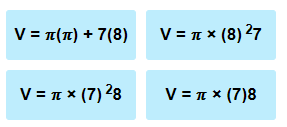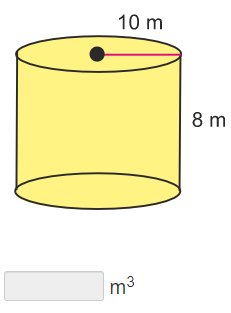
Volume of Cylinders
Concept
The volume of cylinder is the capacity of the cylinder which calculates the amount of material quantity it can hold. In geometry, there is a specific volume of a cylinder formula that is used to measure how much amount of any quantity whether liquid or solid can be immersed in it uniformly. A cylinder is a three-dimensional shape with two congruent and parallel identical bases.
Rules
1. Use the formula V = πr2h to find the volume of the cylinder.
2. Substitute in the given values for r and h.
3. Solve using order of operations.
Example
Solution
The equation for finding the volume of a cylinder is V = πr2h
Substitute in the given values for r and h.
r = 5 and h = 8.3
V = π(5)2(8.3)
Solve using order of operations and round the result to the nearest tenth
V = 651.88 ≈ 651.9 cm3
Practice Volume of Cylinders

Volume: It is the measure of the space occupied by a solid. Volume is measured in cubic units.
Cylinder: A three-dimension figure with two parallel congruent circular bases connected by a curved surface.
Pre-requisite Skills
Circumference and Area of Circles
Volume of Prisms





